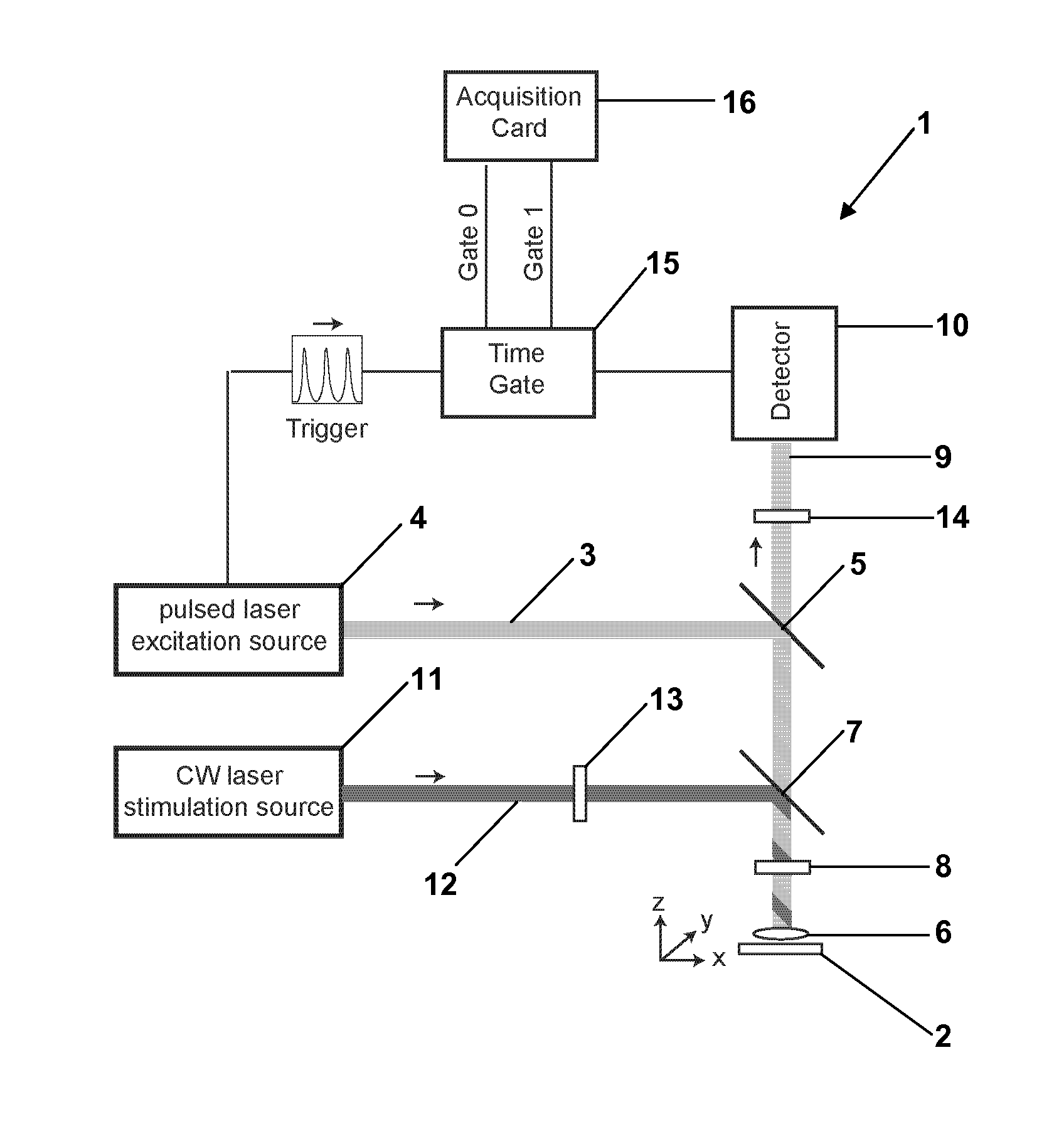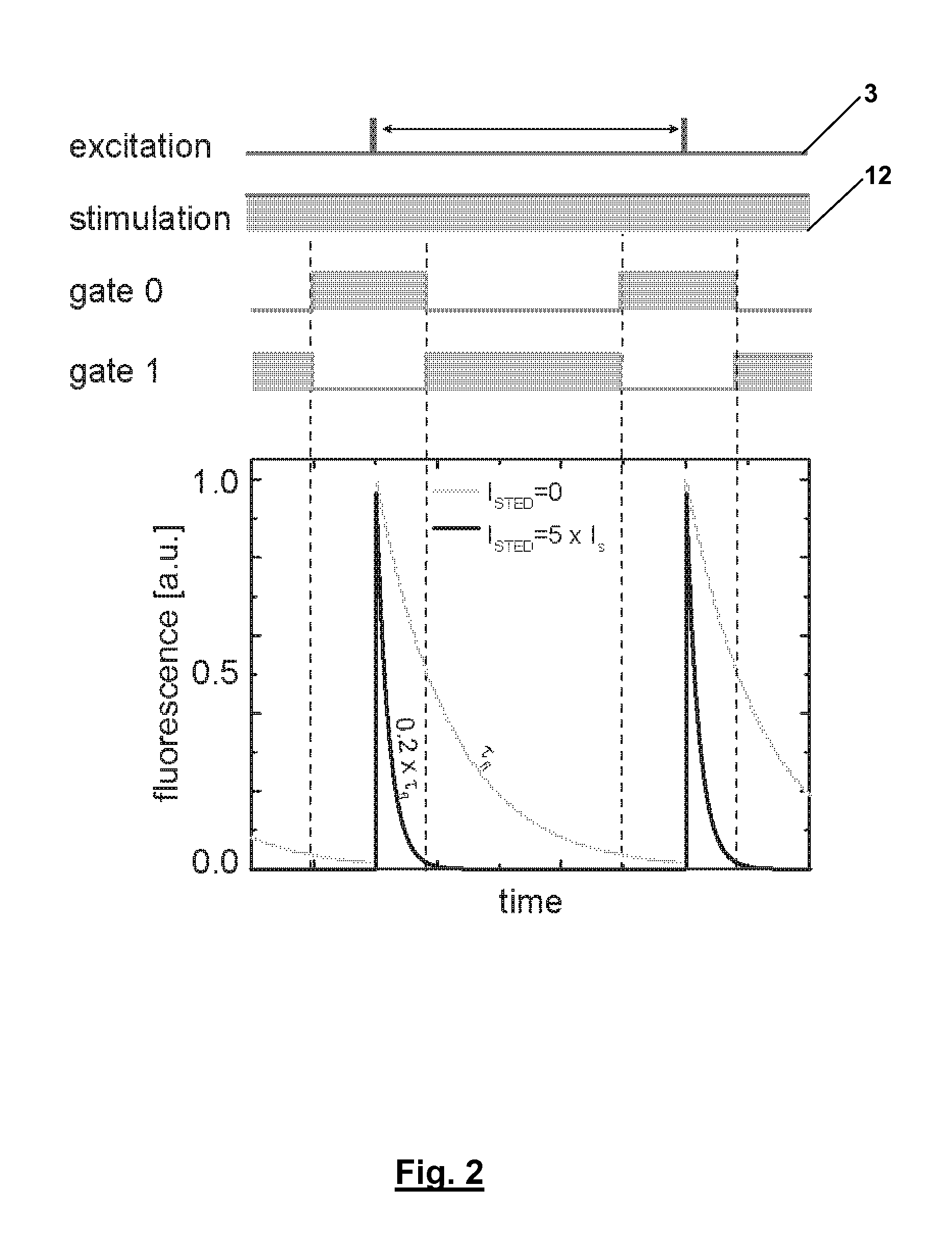STED Microscopy With Pulsed Excitation, Continuous Stimulation, And Gated Registration Of Spontaneously Emitted Fluorescence Light
a fluorescence light and microscopy technology, applied in the field of sted fluorescence light microscopic method and sted fluorescence light microscope, can solve the problems of small signal yield in fluorescence light microscopic methods using multi-photon excitation, and high cost of pulsed lasers. , to achieve the effect of reducing the cost of pulsed lasers, and reducing the cost of pulsed
- Summary
- Abstract
- Description
- Claims
- Application Information
AI Technical Summary
Benefits of technology
Problems solved by technology
Method used
Image
Examples
Embodiment Construction
[0020]Both in the new STED fluorescence light microscopic method of imaging a structure which is marked with fluorescent entities in a sample, and in the new STED-FCS method of observing fluctuations of fluorescent entities contained in a sample within a spatially limited volume of the sample, the fluorescence light emitted by the excited fluorescent entities is registered with high temporal resolution between consecutive pulses of the excitation light. I.e., even with a typical repetition rate of the pulses of the excitation light in the order of some ten MHz, the temporal resolution has to be considerably higher than the reciprocal value of this repetition rate. According to the present invention, the registration of the spontaneously emitted fluorescence light does not take place sometime between the pulses of the excitation light but during a defined interval in time in each period started with each pulse of the excitation light. This allows for discarding or not registering par...
PUM
| Property | Measurement | Unit |
|---|---|---|
| time gitter | aaaaa | aaaaa |
| time gitter | aaaaa | aaaaa |
| light power | aaaaa | aaaaa |
Abstract
Description
Claims
Application Information
 Login to View More
Login to View More - R&D
- Intellectual Property
- Life Sciences
- Materials
- Tech Scout
- Unparalleled Data Quality
- Higher Quality Content
- 60% Fewer Hallucinations
Browse by: Latest US Patents, China's latest patents, Technical Efficacy Thesaurus, Application Domain, Technology Topic, Popular Technical Reports.
© 2025 PatSnap. All rights reserved.Legal|Privacy policy|Modern Slavery Act Transparency Statement|Sitemap|About US| Contact US: help@patsnap.com



